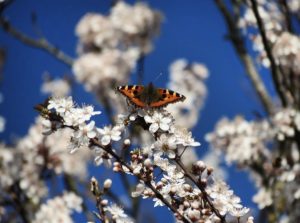Insects are pollinators, which means they help the spread of seeds to ensure the survival of plant life. That role makes the sudden decline of insects in our ecosystem significant. In honor of Earth Day, check out these recent articles to find out what's been hypothesized and confirmed about this decline.
You can read these articles using CPL's Online Resources.
"A Sting in the Tail" by Mark Rowe
Geographical Magazine, January 1, 2019
Despite the benefit of increased crop production that pesticides allow, one hazardous effect is the diminishing honeybee population. Ironically, more than half the world's crops rely on bees for pollination.
"Conserving Honeybees Does Not Help Wildlife" by Jonas Geldmann and Juan P. Gonzalez-Varo
Geographical Magazine, May 1, 2018
The importance of building strategically mindful policies is stressed by noting the decline and importance of other wild pollinators apart from honeybees.
"Gone in a Flash" by Jacob Batchelor
Science World, May 14, 2018
One of the most magical bugs is disappearing. Light pollution and habitat loss may be culprits. Learn the science behind fireflies' bio-luminescence and flash patterns as well as how to help save them.
"An Insect Apocalypse Will Be Our Apocalypse" by Michael S. Engle
The Washington Post, March 3, 2019
The National Butterfly Center in Texas may be a thing of the past if the United States follows through with its plan to build a border wall. Why should we care?
"Monarchs Ride West Coast Winds" by Cell Press
Science Scope, August 1, 2018
Scientists and volunteers recently discovered that monarch butterflies need nectar and warm air currents for migratory survival. Scientists, volunteers and prisoners team up to create sustainable flight paths.




Add a comment to: 5 Articles: The Decline of Insect Life